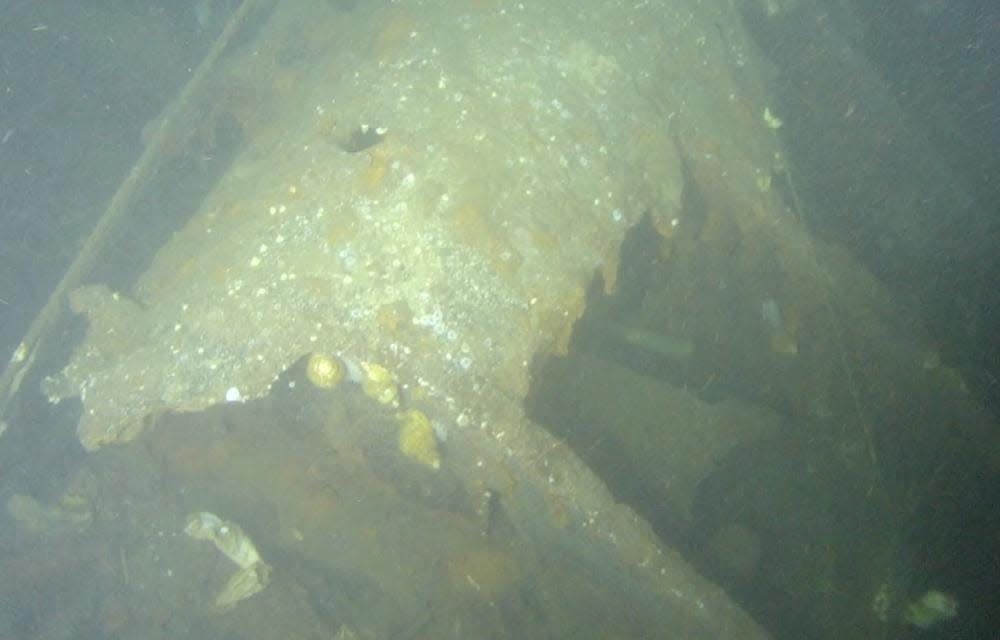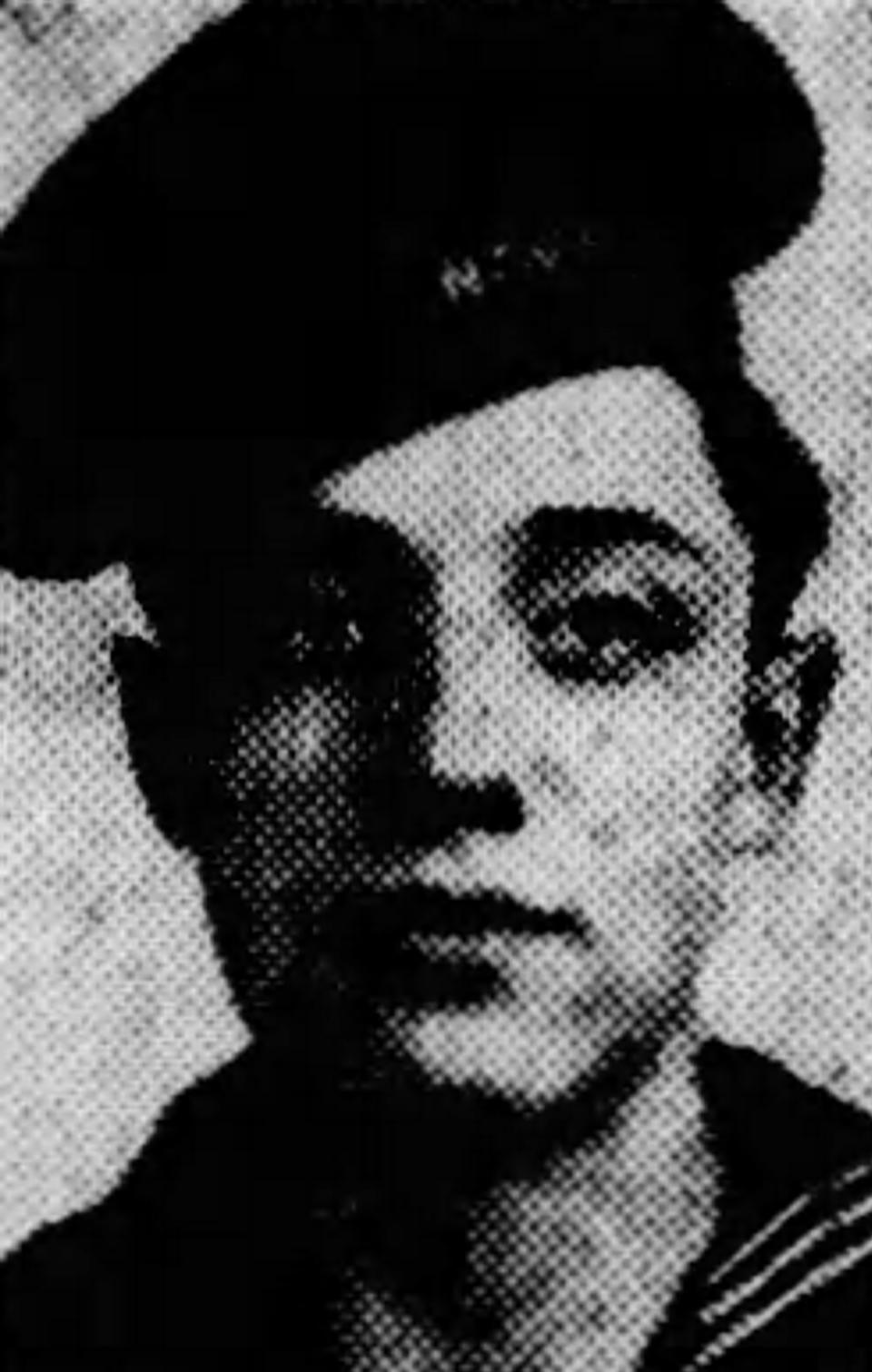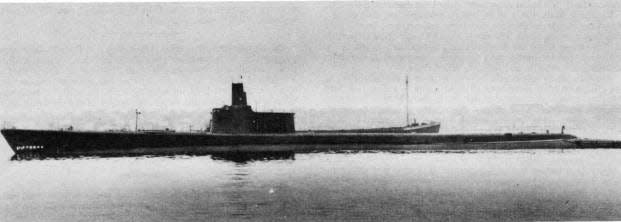World War II sub found: Officials confirm final resting place of Akron sailor

Johnny Carano couldn’t wait to go to war like his big brothers.
So he didn’t wait.
The Akron teenager left high school, lied about his age, joined the U.S. Navy and served aboard a submarine during World War II.
Sadly, he never came home.
Naval historians on Feb. 16 confirmed a shipwreck site off the coast of Hokkaido, Japan, as the USS Albacore (SS-218), which was lost at sea Nov. 7, 1944, after striking a mine.
All 85 crew members, including 18-year-old Carano, were killed in the explosion.

The Naval History and Heritage Command’s underwater archaeology branch at the Washington Navy Yard verified the submarine’s identity using images provided by Dr. Tamaki Ura of the University of Tokyo, according to Mass Communication Specialist 1st Class Abigayle Lutz.
“As the final resting place for sailors who gave their life in defense of our nation, we sincerely thank and congratulate Dr. Ura and his team for their efforts in locating the wreck of Albacore,” announced Retired U.S. Rear Admiral Samuel J. Cox, director of the command.
“It is through their hard work and continued collaboration that we could confirm Albacore’s identity after being lost at sea for over 70 years.”
Nephew discusses family tragedy
Akron sailor John Joseph Carano, a motor machinist’s mate third class, was among the casualties.
“My grandmother was so distraught over what happened with Johnny,” said nephew Rick Maconachy, 70, of Akron. “She didn’t want him to go off to war.”
When Maconachy was growing up, the family seldom mentioned the tragedy around the kids.
“There wasn’t much said about it,” he said.
Maybe that’s because they didn’t have many details — other than the sailor was lost in the Pacific.
“Nobody knew anything,” he said. “Missing in action. Period. Nothing resolved.”
Born April 28, 1926, Johnny Carano was a son of Italian immigrants Silver and Angela Carano. He and his twin sister, Jean, were the youngest of seven siblings, including Marie, Phillip, Esther, David and James.
The North Hill family lived in a three-bedroom brick colonial on Big Falls Avenue. The father was a tailor at O’Neil’s department store and the mother was a housewife. Johnny attended Jackson Elementary, Jennings Junior High and North High School.
One by one, Johnny’s older brothers volunteered for military duty at age 18 after graduating from North. Phillip joined the Navy in 1938, David entered the Marines in 1941 and James joined the Marines in 1942.
Carano was barely 17 when he enlisted May 5, 1943, although the Navy apparently believed he was older. According to enlistment records, he told recruiters that he had completed four years of high school and worked as a welder.
“They have his birthdate as April 22, 1923,” Maconachy said. “But in my mom’s records that I found, his birthday was April 28, 1926.”
The North Hill boy must have fudged his age to join the service.
“I’m thinking so,” Maconachy said.
Carano trained at Navy Pier in Chicago and graduated from submarine school in Groton, Connecticut, around March 1944.

USS Albacore’s final mission
He was assigned to the USS Albacore, a 311-foot, Gato-class submarine that had been in service since 1942. According to the Navy handbook, Carano’s duties as a motor machinist’s mate included running the engine plant, repairing broken and worn parts and “operating and tending many kinds of auxiliary equipment — everything from distillers and refrigerators to hydraulic couplings and bilge pumps.”
The Albacore was ranked as one of the most successful U.S. submarines against enemy combatants during World War II, according to the Naval History and Heritage Command. During 10 missions, the sub sank at least 10 enemy vessels, earned nine battle stars and received four Presidential Unit Citations.
On its 11th mission, the Albacore departed Pearl Harbor on Oct. 24, 1944, refueled at Midway on Oct. 28 and left for a patrol northeast of Honshu and south of Hokkaido. With Lt. Cmdr. Hugh R. Rimmer in charge, the ship had orders to “stay outside of waters less than 100 fathoms deep” because of the danger of Japanese mines.
The submarine was due back Dec. 12 at Midway but never arrived. In March 1945, the Navy notified families that the ship was presumed lost.
After the war, Japanese officials confirmed that a patrol craft had witnessed an underwater explosion Nov. 7, 1944, with heavy oil, bubbles, cork, bedding and other debris rising to the surface.
Ura, the Tokyo professor, began searching for the Albacore in 2020, but had to suspend efforts during the COVID-19 pandemic. Gathering latitude and longitude data from the Japan Center for Asian Historical Records, he used sonar to pinpoint a shipwreck about 750 feet down in May 2022.

His team used an underwater robot to capture murky video of a rusting hulk on the seafloor. Ura sent the findings to the Naval History and Heritage Command, which had also been trying to locate the submarine.
“Strong currents, marine growth and poor visibility on site made it challenging to fully document the wreck or obtain comprehensive images,” Lutz reported.
However, U.S. experts were able to glimpse several documented Albacore modifications, including “the presence of an SJ Radar dish and mast, a row of vent holes along the top of the superstructure and the absence of steel plates along the upper edge of the fairwater,” to confirm the ship’s identity.
Final resting place of sailors
The wreck of the Albacore is a sunken military craft protected by U.S. law. The Navy command must authorize any future exploration if it involves “intrusive or potentially intrusive activities.”
“Most importantly, the wreck represents the final resting place of sailors that gave their life in defense of the nation and should be respected by all parties as a war grave,” Lutz noted.
Maconachy was taken aback to learn that his uncle’s submarine had been found after so many years. He hadn’t even considered it a possibility.
“I shouldn’t be surprised — with today’s technology and all the underwater mapping that goes on,” he said.
He only wishes that the older generation was here to see it. That tight-knit family from North Hill, the one who lived in that little house on Big Falls Avenue, is gone now.
“I just think of my mom and her siblings and Johnny’s parents, how they would have felt being able to read something like this,” he said. “You know what I mean? For a little bit of closure, knowing what their son was involved in.”
Johnny Carano was posthumously awarded a Purple Heart. His name is among 28,788 etched in marble on the Honolulu Memorial at the National Memorial Cemetery of the Pacific.
A stone marker notes at the entrance:
IN THESE GARDENS ARE RECORDED
THE NAMES OF AMERICANS
WHO GAVE THEIR LIVES
IN THE SERVICE OF THEIR COUNTRY
AND WHOSE EARTHLY RESTING PLACE
IS KNOWN ONLY TO GOD
Mark J. Price can be reached at mprice@thebeaconjournal.com.
Local history:Akron-born child star Jimmy Butler gave all for country
This article originally appeared on Akron Beacon Journal: World War II sub found: Akron sailor’s final resting place confirmed

